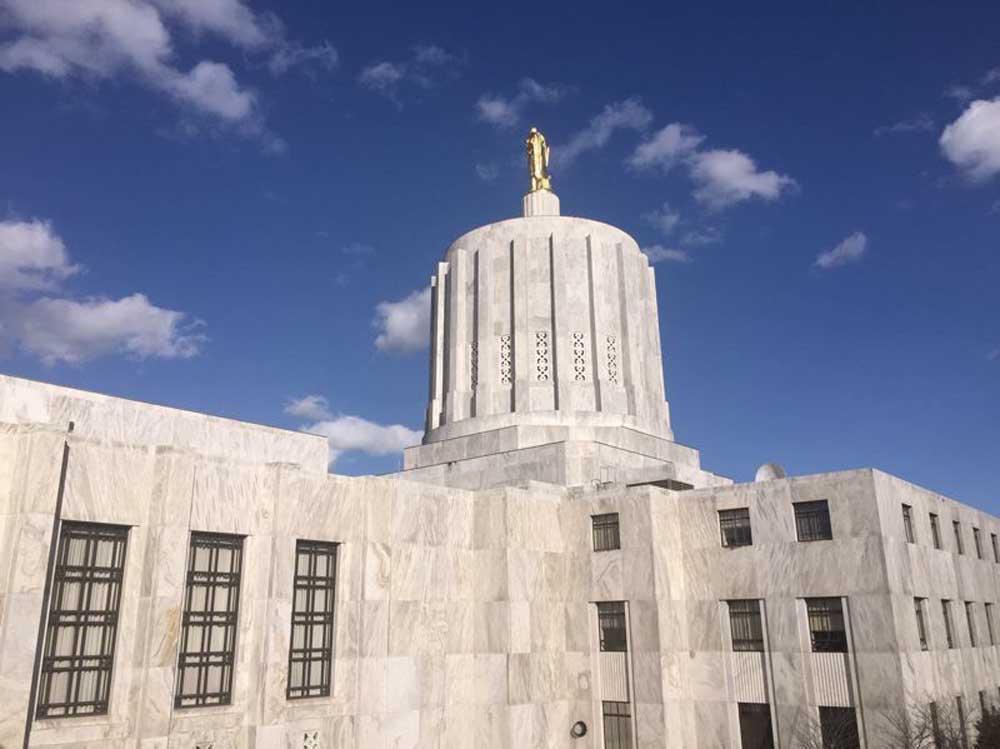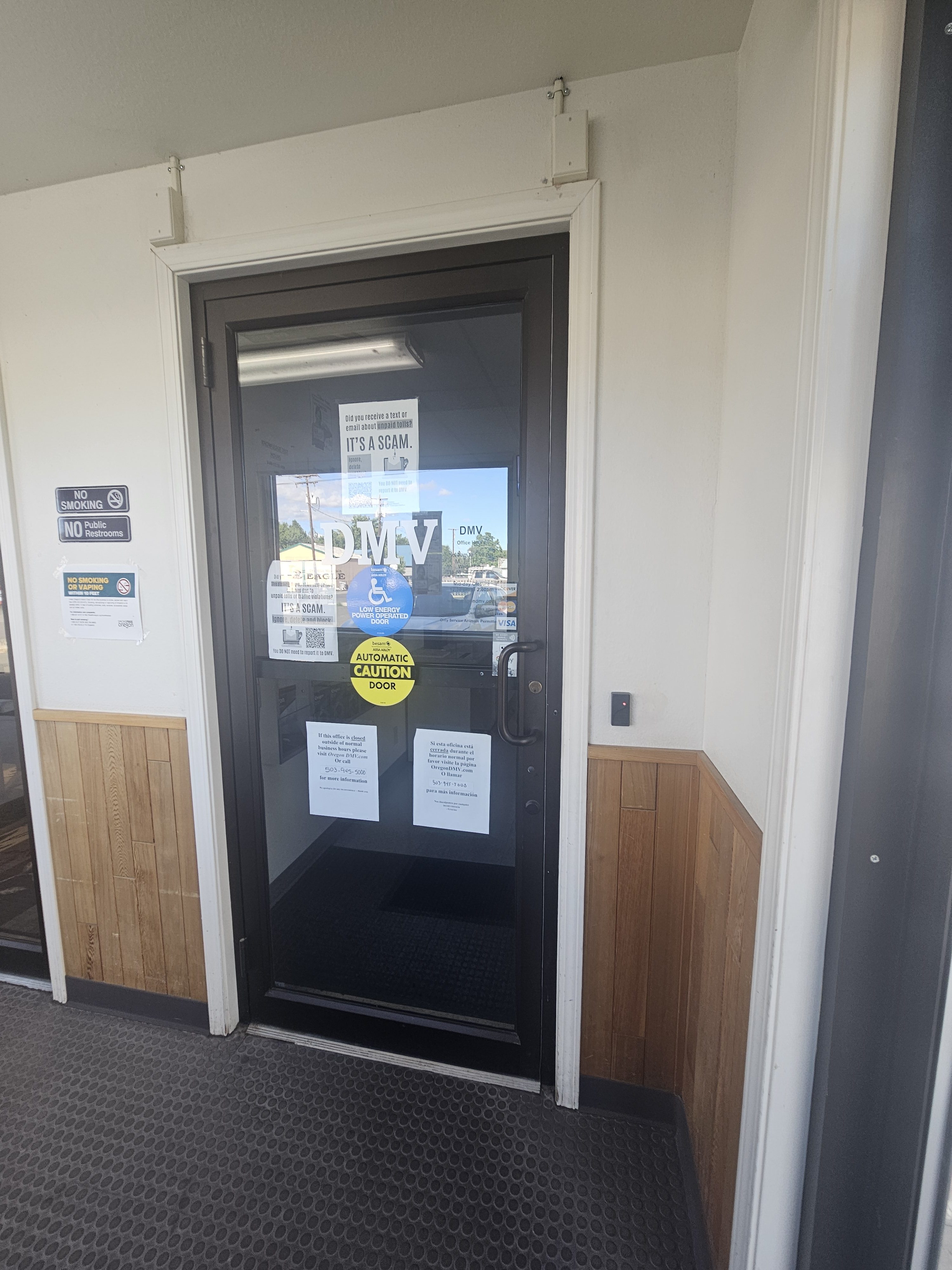Strong economy pumps an extra $800M into Oregon tax coffers
Published 11:14 am Thursday, November 18, 2021

- The Oregon State Capitol.
Oregon’s state coffers continue to add personal and corporate income taxes at a record pace, state economists told lawmakers, although there are other signs that pace will slow soon.
Trending
Though the state’s current two-year budget cycle has almost 18 more months to go, the newest projections put the state on track for a $553 million return of excess personal income taxes in spring 2024 — in the form of credits reducing taxes owed — and a $250 million return of corporate income taxes into the state school fund.
“That is still up in the air,” state economist Mark McMullen told members of the House and Senate revenue committees on Wednesday, Nov. 17. A determination of whether there are excess taxes will await the September 2023 forecast, the first after the current budget cycle closes in June 2023.
Still, he said, the state withheld a record amount of personal income taxes in October — a sign that people are working — and collected a record in corporate income taxes. Those two sources account for more than 90% of the general fund, the most flexible support for state services and aid to public schools. Oregon Lottery sales also have recovered from pandemic lows.
Trending
“All of Oregon’s indicators are outstripping expectations. The revenue boom continues unabated,” McMullen said. “Unfortunately, our recent revenue forecasts have called for tax collections to return back to earth. They will continue to grow, but come back to more sustainable levels.”
McMullen said tax collections so far are exceeding the close-of-session forecasts set when lawmakers put together the 2021-23 state budget in June. Under Oregon’s kicker law, amounts that exceed the forecast by 2% or more go back to taxpayers, or in the case of businesses, into the state school fund.
Taxpayers will see credits amounting to a record $1.9 billion when they file 2021 tax returns in 2022. The $847 million in excess corporate income taxes was added to the two-year $9.3 billion state school fund.
Economy generates more
McMullen and senior economist Josh Lehner spoke as the Oregon Employment Department released the state’s October unemployment rate, which dipped to 4.4% from the 4.7% in September. Oregon’s economy continued to add jobs, but the agency also reported that growth has slowed since summer.
Oregon is still 70,000 jobs below its pre-pandemic peak — the state’s unemployment rate shot up from a record-low 3.5% in March 2020 to an adjusted 13.2% the following month after businesses closed or curtailed operations — and the Employment Department said 30,000 of those still-unrecovered jobs were in restaurants, bars and hotels, known as “leisure and hospitality.”
But many workers moved into higher-paying jobs in other sectors, such as transportation and warehousing — and employers are paying higher wages. “As a result, we are seeing income tax collections reflecting it,” McMullen said.
Inflation is eating into some of those gains, though Lehner said workers earning less than $20 per hour are still seeing real growth in wages, but those earning more are feeling the pinch.
“We are in this supply-constrained economy where there are inflationary pressures much higher than we have seen in 30 years,” he said.
While some inflationary pressures are short-term, such as the production of goods that has not yet caught up with consumer demand, Lehner said Oregon still faces long-term issues such as the lack of lower-cost housing. Housing sales prices and rents have continued to go up.
McMullen and Lehner did reinforce Employment Department reports that Oregon’s rural counties, not its big cities, have led the recovery from the pandemic. During 2020, median income growth in the 18 counties east of the Cascades was around 15% — double the U.S. median of 7.6% — while it was lowest in Benton County and Washington County, which have Oregon’s highest per-capita incomes.
Lehner said all Oregonians benefited from federal transfer payments such as stimulus checks, enhanced unemployment benefits and an expanded child tax credit. The first two have ended, and President Joe Biden’s Build Back Better plan proposes to extend the third for another year.
“A lot of these counties started with a low-income base. When you add these transfer payments … it led to large percentage increases,” Lehner said.
“But our traditionally highest-income, lowest-unemployment counties lagged behind the U.S. median because it is a much smaller share in high-income areas.”
What’s wrong with Portland?
Lehner spoke directly about the economy in the Portland metropolitan area, which is defined as five Oregon counties and two counties across the Columbia River in Washington state. He said economic indicators are lagging, chiefly because of the leisure and hospitality sector, which in Multnomah County shed half its jobs during the early months of the pandemic and still has not recovered fully.
Post-pandemic population growth in Oregon is lagging for 2021 — Portland State University projects just half a percentage point statewide — but the same counties continue to lead: Washington County, plus Deschutes and Crook counties in Central Oregon.
Critics have pointed to the prominence of boarded-up storefronts, homeless encampments and civil unrest in Portland itself.
“But there is a big difference between public perception … versus underlying economic performance,” Lehner said. “We are not here to talk about the social challenges and how to address them best. But when we look at the underlying economy, what’s wrong with Portland? Relative to other metropolitan areas, nothing is wrong with Portland. We see the same patterns in other large metropolitan areas.”
Still, he said, Portland suffers in comparison with two comparable metro areas that are among the nation’s fastest growing — Austin, Texas, and Salt Lake City — and others such as Indianapolis, Nashville and Seattle.
“But fundamentally, the outlook is bright for the Portland economy,” Lehner said.
“Oregon and Portland are going to grow at above-average rates. It will continue to draw in-migration over time. The real question is whether we are going to regain our perch among the top 10 in the country.”
Reactions
Gov. Kate Brown:
“Today’s revenue forecast, along with the good news that Oregon’s unemployment rate has dropped to 4.4%, confirms that we have strong momentum for recovery from the economic impacts of COVID-19. And with a healthy ending fund balance, we have an opportunity to make targeted investments to close the gaps for Oregonians still in need. We must continue to center equity in our recovery efforts to ensure that the communities disproportionately impacted by the pandemic due to historic disparities –– Oregon’s Black, Indigenous, Latino, Latina, Latinx, Asian, Pacific Islander, Tribal, and people of color –– benefit equitably from Oregon’s strong economic recovery.
“As we head towards the February legislative session, I’ve tasked a subgroup of the Racial Justice Council — that includes business owners and workers — with developing a package of workforce investments for the February session aimed at helping people get back to work and improving career paths. And because lack of stable housing is often the biggest barrier to getting or keeping a job, I am also continuing my conversations with legislative leaders about policy solutions to help people access and retain stable housing.
“We also have the opportunity to leverage our state revenues with the additional federal resources that are coming our way from the Infrastructure Investment and Jobs Act, setting us up for tremendous possibilities to help Oregon’s families and businesses continue to recover.
“As we recover, we must support the communities that have been disproportionately impacted. With these critical investments from the Biden-Harris administration, we can now ensure these communities have access to good-paying jobs, affordable broadband, reliable public transit, and other essential resources.”
Senate President Peter Courtney, D-Salem:
“Oregon continues to see robust growth. We did not expect this. Apparently, we’ve recovered quickly from the economic downturn. Economists don’t seem to know why. I think we should continue to be vigilant and frugal about the money we have.”
Senate Republican Leader Tim Knopp of Bend:
“Inflation is devastating for working families, but pads the pockets of government. Blowout spending from federal government borrowing has given us more money than we know what to do with at the same time most working people have gotten effective pay cuts because everything is more expensive. Yet, Democrats’ vision continues to be tax, borrow, and spend. It’s time to give working Oregonians some relief in their family budget.”
House Speaker Tina Kotek, D-Portland:
“The revenue growth in today’s forecast does not change the fact that too many Oregonians are still facing a challenging recovery from the pandemic recession. We are seeing this unfold in many ways, including the ongoing high demand for rental assistance. Like in the last legislative session, we must invest new revenue in communities that faced the brunt of the economic downturn so that we can build a better future for everyone.”
House Republican Leader Christine Drazan of Canby:
“It’s clear from this strong revenue forecast that Oregonians are incredibly resilient and should be commended. Many people have navigated difficult circumstances to find jobs, helping our economy rebound. Employment levels returning to pre-pandemic years is exactly what families and businesses needed. Unfortunately, inflation is a warning sign that a downturn is around the corner and we must proceed cautiously with our state budget.
“One fact we can’t overlook is even with all this taxpayer money state government is not improving. State agencies are overspending record budgets but coming up short for Oregonians. Many critical agencies continue to fail at delivering core services and operate functionally on behalf of Oregon students, families and businesses.”
House Majority Leader Barbara Smith Warner, D-Portland:
“This forecast once again shows that the historic investments we made as a Legislature this past session, as well as the Biden-Harris administration’s American Rescue Plan Act, are working. It also shows that we cannot stop here. We must continue to invest in Oregonians.
“As a Legislature, we understand this reality and stand committed to the workers, families, and small businesses fighting to make ends meet. We’ll continue to push for crucial investments to ensure an equitable recovery. Our work is not done.
“What we are hearing across the state, from small businesses to working Oregonians, is that the pandemic isn’t over. We know the Delta variant continues to impact Oregonians and exacerbate existing income inequality, growing the divide between the ‘haves’ and the ‘have nots.’ We also see that Black, Indigenous, People of Color (BIPOC) communities and women, who are disproportionately represented in frontline jobs, face greater economic instability. This is unacceptable.
“We also can’t do this alone. We need Congress to pass the Build Back Better plan. This would rebuild the backbone of our economy and strengthen our middle class. If passed, this historic investment would lower prescription drug costs; provide families with paid time off, elder care, universal pre-K and childcare; make housing affordable and address houselessness; lower middle class taxes by ensuring the wealthiest and corporations pay their fair share; invest in clean energy jobs, tackle climate change, and much more.
“Economic opportunity can and should be available to all and we will continue to build a future where everyone has a chance to truly prosper — not just those at the top.”









